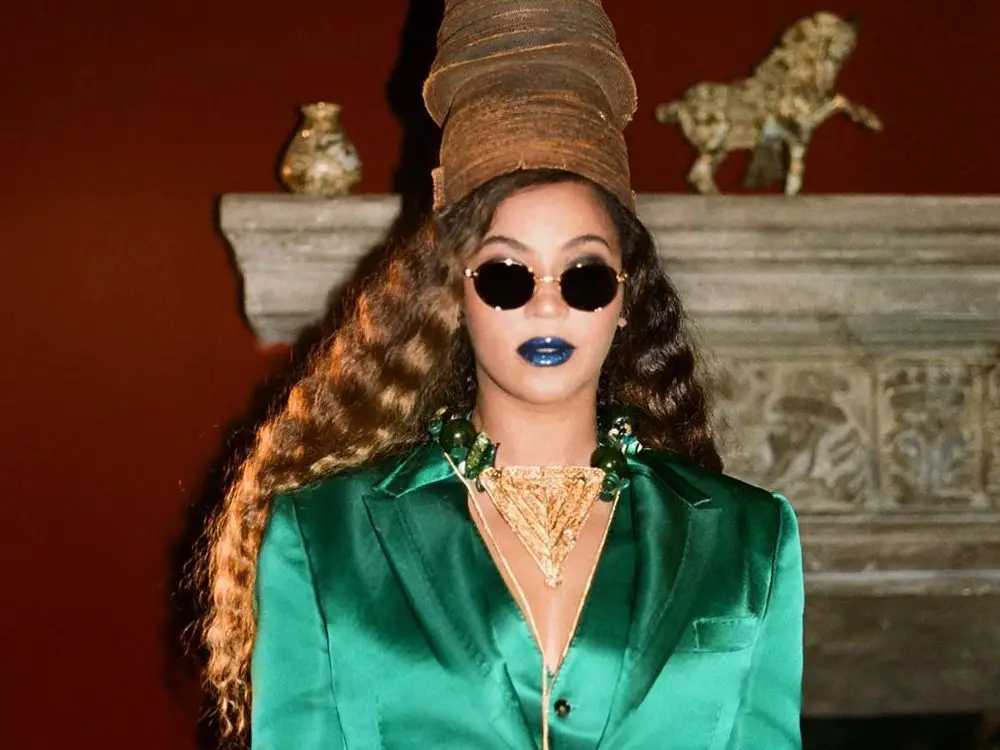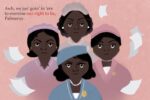Ever since Beyoncé released her stunning short film “Black Is King” on Disney+ in late July, fans haven’t stopped raving about it. The film is a visual embodiment of the songs on “The Gift,” Beyoncé’s album for the live-action “The Lion King” movie. In Beyoncé’s own words, the soundtrack is “meant to celebrate the breadth and beauty of Black ancestry” and “tell [Black people’s] REAL history of generational wealth and richness of soul that are not told in our history books.”
The film was a hit, and I thought Queen Bey had given us more than enough to enjoy for the time being. But now, less than a month after the visual album, she has featured one of its most powerful songs, “Brown Skin Girl,” in a stand-alone music video. If you thought her work couldn’t possibly get any better, you were mistaken.
For those who don’t have Disney+ or somehow missed the viral Brown Skin Girl challenge it inspired, the video puts the song’s musical artistry and lyrical genius on proud display — while simultaneously building on the profound themes that you might miss while listening to the music on its own.
African-Inspired Musicality
“Brown Skin Girl” is personal; it’s cowritten and partly sung by Beyoncé’s own daughter Blue Ivy. On a grander scale, the song also pays homage to West African music, passing off the mic at times to Guyanese American R&B hip-hop singer and rapper SAINt JHN and Nigerian singer Wizkid, whose reggae, Afrobeats and dancehall background shines through in the way he shapes each phrase.
Producer P2J designed the melody as a delightful blend of intimate piano ballads and peppy, rhythmic grooves: “I wanted it to feel like it was outside, chilling on a porch, a playground or the park, that’s why it’s very minimal,” he said in an interview. “I wanted it to feel very intimate.”
Add in Wizkid’s reggae-like drive and Beyoncé’s soaring vocals, and you’ve got an undeniably catchy beat: It’s relaxing enough to spread a contented smile on your face and upbeat enough to put a groove in your step.
Uplifting Yet Sobering Lyrics
If you look at the lyrics alone, “Brown Skin Girl” can be seen as one person’s sweet expression of affection to their beloved. But it’s also light-years ahead of your typical love song. Soaring far above one person’s private serenade to their beloved, Queen Bey’s tune is a universal anthem of empowerment for an entire demographic: every Black girl with brown skin.
Beyoncé’s lyrics give us the language to describe the beauty that only Black women can boast. Some of them are Blue Ivy’s own words: “Brown skin girl/ Your skin just like pearls/ The best thing in the world.” Others praise Black hair and curves: “I love everything about you, from your nappy curls/ To every single curve, your body natural.”
For a culture that easily praises fair skin, these words are invaluable additions to a nonexistent vocabulary.
The music video builds on this theme with its own layer of narrative and thematic richness. It’s a heartwarming nod to values of family and friendship as well as individual self-acceptance and growth — a reimagined portrayal of royalty.
Honoring Girls, Family and Relationships
Beyond its racial and cultural commentary, the music video is a celebration of children. Beyoncé honors her daughter Blue Ivy by centering her in the video as if to give her the platform she unconditionally deserves. And amid all the cameos, the central narrative in the film is one young Black girl’s growth from tentative to joyful as she takes in the beauty of the community around her and comes to see herself, too, as beautiful.
The special princess status crowns each brown-skinned girl in the video. Whether it’s donning glamorous dresses, being honored with a solo shot or being spun down an aisle of bowing patrons, the message comes across loud and clear: Each girl is unquestionably worthy of love and honor.
The music video’s unique focus on family, friendship and motherhood demonstrates the motherly and sisterly undertones in the song, too. Most memorable are the portrayals of relationships, from tender caresses between mother and child to a friend looking lovingly into another’s eyes. And the men are present, too, with brother or father figures taking care of their little girls while their women breeze down the aisle, free to enjoy the luxuries that make them feel beautiful.
Beyoncé portrays Black women receiving affection and support at every stage of life from infant to grandmother. The “Brown Skin Girl” video highlights the strength and unmatched beauty of community. Black skin is even more beautiful than appearances, the Queen sings, because of the stories it tells and the culture it carries.
The song also explicitly acknowledges the Black community’s real experience of slavery and oppression in America. But while it’s a somber topic, the words never waver in their strong, encouraging drive. “Same skin that was broken be the same skin takin’ over,” Beyoncé declares. It’s a prophecy.
Rather than detract from the joy of the video, the painful context actually grounds the celebration in a deep joy. And in juxtaposition to this, the beauty of her characters and their settings shine even brighter.
Clothing Fit For Royalty
The mini-film features Black characters in regal attire and gorgeously staged settings. The shots vary from casual depictions of intimate laughter and friendship to dignified poses, like the ones you’d see in a painting of the British royal family. Whether stone-faced or carefree, the common emotion they all exude is confidence.
The costumes are a gorgeous intermingling of Western and African roots. Some scenes channel pure British royalty with satin gowns and elegant elbow-length gloves. At times, we see modern American crisp, maroon suits with sunglasses or dreamy, retro sundresses. Lupita Nyong’o’s outfits, which include a vibrant red dress with voluminous tulle accents, seem straight out of a Chanel runway show. Beyoncé herself graces the screen in a gorgeous warm yellow jumper-dress and African-inspired headdress.
Yet even while adorning her characters of color in garb fit (I daresay) for the British Queen herself, Beyoncé never leaves behind the rich stylistic and musical influence of her African roots. She’s not extracting Black people from their homeland and artificially inserting them into a completely different culture — it’s all about bringing the beauty of Africa into the modern spotlight of today and seeing Black people as just as regal as white royalty. “Brown Skin Girl” doesn’t throw out our previous American perceptions of beauty and glamour: Rather, the song uses them as a tool to help us see the same values in the Black community and its ancestry.
With its majestic depictions of Black people in atmospheres both warmhearted and serious, the video inserts them, their friends and their music into a predominantly white canon of historical art — it’s an acknowledgment of the past and a forecast for the future.
Empowering the Black Community
The video doesn’t compromise in its focused empowerment of Blackness. There are no Pacific Islanders, no Asians, no Latinx. Beyoncé isn’t merely aiming to elevate African culture and history to match the standard level: She explores and asserts that the culture brings its own unique fare to the table. As the chorus says, a brown-skinned girl’s unique beauty can’t be replaced by anybody else.
As a woman with tan Asian skin that’s certainly too dark to ever pass as white, I too felt seen in her lyrics. Even though there were no Asians in the video, seeing a song and visual production dedicated to elevating underrepresented and underappreciated female Blackness brought me to tears.
The concept isn’t new — we’ve seen much art in the past several years dedicated to uplifting Black people. But the delivery here is immaculate: It was so original that its gentle touch knocked me over like a ton of bricks. The lyrics and visuals mixed maturity with playful lightheartedness. Because of its intergenerational, international scope, the piece is a timeless one.
Beyoncé’s intentional inclusion of tropes found in the traditional art canon and references to luxury and wealth that have hitherto been associated with whiteness make the piece nothing less than a groundbreaking insertion of Blackness into high culture. If there was ever any doubt that Queen Bey or “Brown Skin Girl” would go down in history, we can rest knowing that nobody’s questioning it now.


















There were Asians-just not necessarily East Asians-I saw several South Asians…